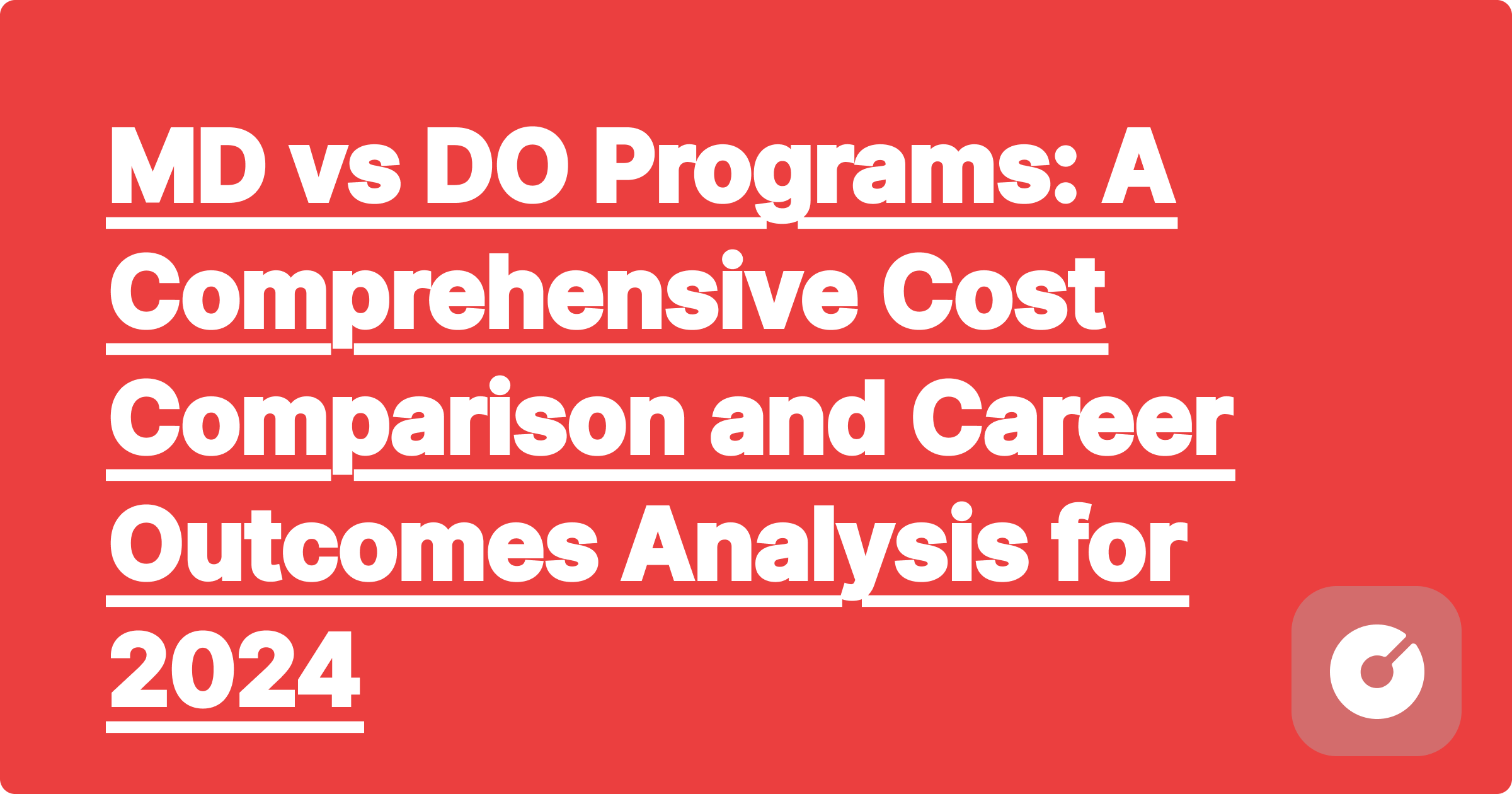
The decision to pursue a career in medicine is a monumental one, demanding years of rigorous study and significant financial investment. For aspiring physicians, a crucial early choice involves selecting between two distinct pathways: the Doctor of Medicine (MD) and the Doctor of Osteopathic Medicine (DO). While both lead to medical licensure and the ability to practice medicine, there are key differences in philosophy, training, and ultimately, career outcomes. This comprehensive guide delves into a cost comparison of MD vs. DO programs in 2024, examining program requirements, timelines, and the potential career paths each offers.
Before diving into the specifics of cost and career outcomes, it's crucial to understand the core philosophical differences between MD and DO programs.
MD (Doctor of Medicine): MD programs emphasize allopathic medicine, which focuses on diagnosing and treating diseases using pharmaceuticals, surgery, and other conventional methods. MD programs are traditionally associated with larger, research-intensive institutions.
DO (Doctor of Osteopathic Medicine): DO programs incorporate the principles of osteopathic medicine, which emphasizes a holistic approach to patient care. This includes considering the musculoskeletal system's impact on overall health and incorporating preventative and manipulative treatments (osteopathic manipulative treatment or OMT). DO programs often have a stronger emphasis on primary care.
While both MDs and DOs can practice in all specialties, the subtle differences in philosophy can influence the types of practice settings and patient populations they serve.
The cost of medical school is a significant factor for prospective students. The following figures represent estimates for the 2024 academic year and can vary significantly depending on the institution and individual circumstances.
Tuition and Fees:
MD Programs: Average annual tuition ranges from $50,000 to $70,000+ at public institutions and $55,000 to $80,000+ at private institutions. The total cost for four years can easily exceed $200,000 to $320,000 or more.
DO Programs: Average annual tuition is generally comparable to MD programs, ranging from $45,000 to $65,000+ at public institutions and $50,000 to $75,000+ at private institutions. The total cost can also exceed $200,000 to $300,000 or more.
Living Expenses:
Living expenses, including housing, food, transportation, and books, will add significantly to the total cost. Expect annual expenses of $15,000 to $30,000 or more, depending on location and lifestyle.
Loans and Financial Aid:
Most medical students rely heavily on loans to finance their education. Federal student loans, private loans, and institutional scholarships are common funding sources. Understanding and applying for financial aid early is crucial.
Both MD and DO programs require a rigorous pre-medical education, including undergraduate coursework in biology, chemistry, physics, and mathematics. The Medical College Admission Test (MCAT) is essential for application to both types of programs.
Application Process:
Pre-med Requirements: Both MD and DO programs require a strong academic record, significant volunteer/shadowing experience, and a competitive MCAT score.
Application Timeline: Applications typically open in May/June and close in October/November for the following academic year.
Acceptance Rates: Acceptance rates for both MD and DO programs are highly competitive, generally ranging from 2% to 10%, depending on the institution's prestige and applicant pool. For example, top-tier MD programs like Harvard Medical School have acceptance rates under 4%, while some DO programs might have slightly higher rates, but still highly competitive.
Example: Let's say a student aims for a prestigious MD program like Johns Hopkins (average MCAT score around 518, GPA around 3.8). Their application will face immense competition. A DO program with a slightly lower average MCAT score (around 512) and GPA (around 3.7) might offer a more attainable path, but success is still highly dependent on a strong application.
While both MDs and DOs can pursue all medical specialties, there may be some subtle differences in career distribution.
Specialization:
MDs: Traditionally, MDs have been more heavily represented in certain surgical specialties and research-intensive fields.
DOs: DOs have historically been more prevalent in primary care specialties, but this gap is steadily narrowing.
Salaries:
Salaries for physicians vary widely based on specialty, location, experience, and practice setting. However, overall, there is no significant salary difference between MDs and DOs practicing the same specialty. For example, a cardiologist, regardless of MD or DO degree, will command a similar salary range. Data from the AMA and other sources suggest average physician salaries in the $200,000 - $300,000+ range, with specialists earning significantly more.
Research thoroughly: Explore both MD and DO programs, considering their philosophies, curriculum, location, and cost.
Strong academic foundation: Focus on excelling in your undergraduate studies and achieving a high MCAT score.
Gain clinical experience: Shadow physicians, volunteer in healthcare settings, and participate in research to strengthen your application.
Network: Attend medical school fairs, connect with current medical students and physicians, and seek mentorship.
Plan your finances: Explore all available financial aid options, including federal loans, scholarships, and grants.
Choosing between an MD and a DO program is a highly personal decision. The differences in philosophy, while subtle, can influence career paths, but both lead to fulfilling and rewarding careers in medicine. By carefully considering the cost, requirements, timelines, and career outcomes, aspiring physicians can make an informed choice that aligns with their individual goals and values. Remember, a strong application, dedication to learning, and a passion for patient care are crucial for success in any medical program.
Second Career Medical Students: Changing Paths to a Rewarding Career
Foreign Medical Schools for US Students: A Comprehensive Guide for 2024 and Beyond
Osteopathic Medicine: Growing Acceptance and Benefits for Aspiring Physicians
Joint Degree Programs: MD/MBA, MD/JD, MD/MPH – Your Path to a Multifaceted Career in Medicine
Caribbean Medical Schools: A Comprehensive Alternative Path Analysis for 2024
International Medical Schools vs. US Medical Schools: A Cost-Benefit Analysis for 2024
International Medical Graduate (IMG) Path to US Practice: A Comprehensive Guide for 2024
DO Schools vs MD Schools: A Complete Comparison for 2024 and Beyond
Medical School Housing: On-Campus vs. Off-Campus – A Comprehensive Guide for 2024 & Beyond
Medical School Waitlist Strategies That Work: A Comprehensive Guide for 2024 Applicants